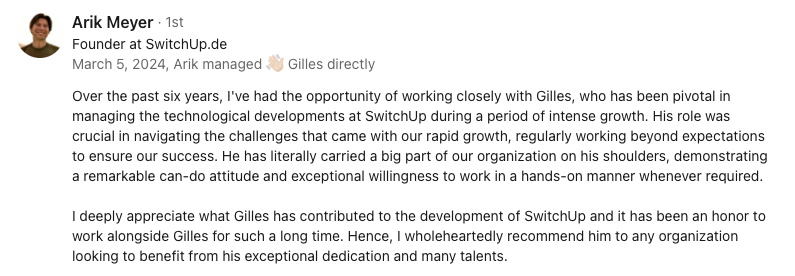Abstract:
Robotic Process Automation (RPA) has become a cornerstone for enhancing operational efficiency and streamlining business processes. This article explores how organizations can harness RPA to improve productivity and reduce operational costs. We discuss practical steps for implementing RPA, from identifying automation-ready processes to selecting the right tools and technologies. With insights into the latest trends and innovations, we also delve into the future of RPA, including AI integration and its implications for the workforce. By leveraging RPA, companies can not only optimize their current operations but also lay the groundwork for future digital transformation, ensuring they remain competitive in a rapidly changing technological environment.
Embarking on a Journey with Robotic Process Automation (RPA)
Imagine a world where your business processes are so streamlined that they seem to take care of themselves, freeing up your human talent to focus on innovation and creativity. This isn't a scene from the latest sci-fi blockbuster—it's the reality offered by Robotic Process Automation (RPA). At the heart of operational efficiency and the quest for digital transformation, RPA stands as a formidable bridge, enabling companies to automate mundane, repetitive tasks with the precision and diligence of, well, a robot. Its significance in the modern fast-paced business setting cannot be overstated. We're not just talking about cutting corners; we're discussing revolutionizing the way enterprises operate, making processes faster, reducing errors to a near mythical zero, and significantly cutting down on operational costs.
But why is this important, you might wonder? In a business environment where the only constant is change, being able to swiftly adapt and optimize operations can make the difference between leading the pack or struggling to keep up. RPA doesn't just offer a way to enhance efficiency; it provides a doorway to innovation by liberating human workers from the mundane, allowing them to focus on what they do best—being imaginative and strategic. As we unpack the power and potential of RPA, keep in mind that we're not merely discussing a tool; we're exploring a transformative force in business optimization. It's about making space for brilliance by offloading the routine to our tireless digital colleagues.
Identifying Automation-Ready Processes
Jumping into the world of Robotic Process Automation (RPA) is akin to exploring a new frontier in efficiency. However, not every task is a golden ticket to this promised land of productivity. The cornerstone of a successful RPA implementation lies in spotting the right processes to automate. It's about picking the low-hanging fruits that are ripe for the taking. But how do you discern these gems amid the vast operations within your organization? Let's navigate through the practical steps to unveil processes that are primed for automation.
Criteria for Automation-Ready Processes
Imagine your typical workday activities. Which ones make you feel like a robot, repeating the same steps with the enthusiasm of a sloth on a Monday morning? Those are your starting points. To refine this further, here’s what characterizes an ideal candidate for RPA:
- Repetitiveness: Tasks that follow a predictable, routine pattern are prime candidates. If it’s as predictable as your desire for coffee each morning, it’s worth automating.
- High-volume data handling: Activities that process large volumes of data, making you feel like you're in a digital version of a paper avalanche, are ripe for RPA.
- Error-prone procedures: If there’s a task that humans often get wrong, perhaps due to the mundanity or complexity, automating it can significantly reduce errors. Imagine entrusting your grocery shopping to a robot who never forgets your milk!
The Critical Step of Business Analysis
Before diving headfirst into RPA, it's vital to take a step back and perform a thorough business analysis. This stage is more about detective work than paperwork. By examining your business processes in detail, you identify not just the what but the why behind potential automation. This means asking questions like, "Is this task central to our operation, or can we not function without it?" and "What impact does automating this process have on our overall business strategy?"
Think of it as assembling a jigsaw puzzle where each piece represents a part of your operations. Some pieces might seem insignificant on their own but play a critical role in the bigger picture. An anecdote worth mentioning involves a global retail giant that decided to automate its procurement process. Initially, the task seemed too complex and intertwined with other operations. However, thorough analysis revealed that repetitive ordering patterns and vendor communications were clogging up valuable employee time. By automating these aspects, they not only cut down on processing time but also significantly reduced instances of over-ordering and stock shortages.
As you embark on this journey of identifying automation-ready processes, remember, it's not about deploying robots to replace humans. It's about creating a symphony where digital workers and human creativity play in perfect harmony. The goal is to amplify efficiency, reduce errors, and liberate your human talent to focus on innovation and strategic thinking.
In conclusion, the road to RPA doesn't start with technology; it starts with insight. By understanding which processes are suited for automation and conducting a diligent business analysis, organizations can pave the way for a future where efficiency and innovation go hand in hand. So, grab your metaphorical magnifying glass and start identifying those automation-ready processes—they might just be the key to unlocking unparalleled productivity and growth.
Selecting Tools and Integrating RPA
Picking the right RPA tools and smoothly integrating them into your existing systems can feel like trying to solve a Rubik's Cube—complex but thrilling once you get the hang of it. The digital market is brimming with options, each promising to be the perfect fit for your automation journey. However, navigating this technologically sophisticated arena requires more than just a keen eye; it calls for a strategic approach to selecting and deploying the right solutions for your organization.
Choosing the Right RPA Tools
Selection is critical, as the wrong choice could set you on a path of frustration, filled with integration nightmares and scalability woes. Consider the following when embarking on your toolkit quest:
- Scalability: Like a plant that needs room to grow, choose a tool that can expand as your business and automation needs flourish. The last thing you want is for your RPA capabilities to be a bonsai when you actually need a mighty oak.
- Ease of Integration: Your chosen RPA solution should be like a chameleon, blending seamlessly with your existing systems. A solution that causes more headaches than efficiencies isn’t worth the investment.
- Cost-Effectiveness: While you shouldn't cut corners, ensuring that the ROI makes sense is integral. An unnecessarily expensive tool is like ordering a gourmet meal when all you needed was a sandwich—tasty, but not cost-efficient.
Moreover, think about the potential for Artificial Intelligence (AI) integration. The perfect RPA tool should not only automate tasks but also become smarter over time, learning from data patterns and making informed decisions. Integrating AI can transform basic RPA into a powerhouse of efficiency, capable of handling complex tasks with nuances that would otherwise require human intervention.
Technological Considerations for RPA Integration
Once you’ve selected your RPA tools, the next hurdle is integrating them into your existing IT framework. It's akin to introducing a new member to your quirky family—they need to get along with everyone. Considerations here include compatibility with current software, ease of deployment, and minimal disruption to ongoing operations.
Moreover, technological advancements mean that RPA tools are not just standalone entities; they're part of a broader ecosystem that includes ERP systems, cloud services, and data analytics platforms. Ensuring these systems can communicate effectively is crucial. It's about creating a symphony of technology where each component plays its part in harmony.
Industry insiders often highlight the importance of a strategic approach to RPA integration. For example, pioneering studies in the field suggest that organizations witnessing the most success with RPA are those that treat it as a component of their digital transformation strategy, rather than a standalone project. This holistic approach ensures that RPA solutions are not just implemented but are deeply integrated with the business's core objectives and technology infrastructure.
As the digital workforce becomes an increasingly common facet of the modern business landscape, staying abreast of the latest trends and technologies in RPA is essential. Innovations in machine learning, process mining, and AI are continuously pushing the boundaries of what's possible, enhancing the capabilities of RPA tools. Following the insights of industry experts and technological thought leaders can provide a beacon for navigating these advancements, ensuring that your automation efforts remain at the cutting edge.
Ultimately, selecting and integrating the right RPA tools into your business operations is a nuanced process, involving careful consideration of scalability, cost, ease of integration, and the potential for AI enhancement. However, with a strategic approach and an eye on the future, it is possible to deploy RPA solutions that not only improve efficiency today but also pave the way for continued innovation and success. Remember, in the symphony of digital transformation, every instrument plays a critical role, and RPA is no exception. So, tune your orchestra wisely, and let the music of automation play!
The Future of RPA: Charting the Path Forward
As we venture further into the technological odyssey, the horizon for Robotic Process Automation (RPA) expands with possibilities that could easily be mistaken for the plot of a futuristic novel. The trajectory of RPA is not just a linear extension of its current capabilities but encompasses anticipated advancements that promise to redefine the boundaries of digital transformation and workforce dynamics. But, what does the future hold for this digital juggernaut?
Anticipated Advancements in RPA
Imagine a future where RPA bots not only automate tasks but also predict operational bottlenecks before they even occur. This is not wishful thinking; it’s the direction in which we’re headed. With the infusion of artificial intelligence (AI) and machine learning (ML), RPA is set to evolve from a rule-based executioner to a strategic partner capable of making real-time decisions, optimizing processes dynamically, and providing actionable insights into improving business operations. The convergence of RPA with cognitive technologies like natural language processing (NLP) and computer vision will further expand the automation horizon, enabling the automation of complex, judgment-based tasks that were previously thought to require the nuanced understanding of humans.
Furthermore, the integration of RPA with Internet of Things (IoT) devices and blockchain technology could usher in an era of unprecedented efficiency and transparency in operations, from supply chain management to financial transactions. These advancements hint at an exciting, albeit uncertain, future where the possibilities are limited only by our imagination and the algorithms’ capacity to learn.
The Broader Implications for Digital Transformation and the Workforce
The ripple effects of RPA’s evolution extend far beyond operational efficiencies. As automation becomes deeply ingrained in the fabric of business operations, it paves the way for a more strategic approach to workforce development. The narrative shifts from RPA as a means of replacing human effort to that of augmenting and elevating the human potential. The future workforce will need to adapt to this paradigm, focusing on skills that cannot be automated—creative thinking, emotional intelligence, and strategic planning. For companies, the challenge and opportunity lie in nurturing a culture that embraces continuous learning and innovation, ensuring that their human capital is not just equipped to work alongside digital workers but thrives in doing so.
In this context, RPA transitions from being a tactical tool to a strategic asset, a catalyst for growth that transcends its initial remit of operational efficiency. Companies that recognize and leverage this shift can position themselves at the vanguard of their industries, not just as market leaders but as pioneers of the digital age.
Navigating the Technological Odyssey
The journey with RPA is akin to charting a course through uncharted waters—the potential for discovery is vast, but so are the challenges of navigating the unknown. Staying abreast of technological advancements, fostering an innovative culture, and adopting a strategic approach to digital transformation are imperative for businesses aiming to leverage RPA effectively. Yet, the true measure of success in this odyssey will be the ability to not just adapt to change but to anticipate and shape it. As we stand on the cusp of what could be the golden age of automation, it prompts a moment of reflection: Are we merely participants in the digital transformation, or are we its architects, crafting a future where technology and human ingenuity converge to create a world of limitless possibilities?
The story of RPA is far from over; it is just beginning. As we peer into the crystal ball of technological advancement, it's clear that the role of RPA in optimizing business operations for competitive advantage is not just critical—it's transformative. So, let's ask ourselves: Are we ready to play our part in this unfolding narrative, to harness the power of automation in crafting a future that marries efficiency with innovation? The answer to this question could very well determine the legacy we leave in the annals of digital transformation.
You might be interested by these articles:
- Robotic Process Automation Implementation
- Streamlining Workflows with RPA
- Boosting Customer Satisfaction with RPA in European Startups





